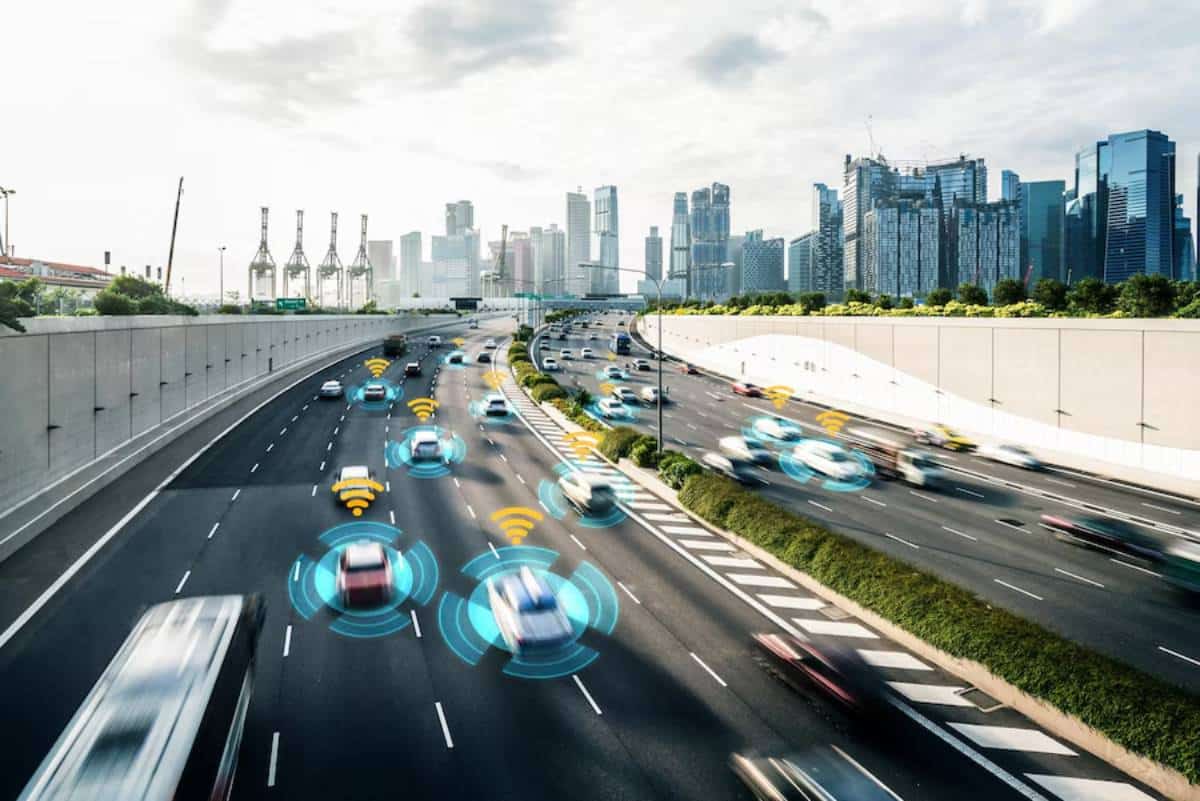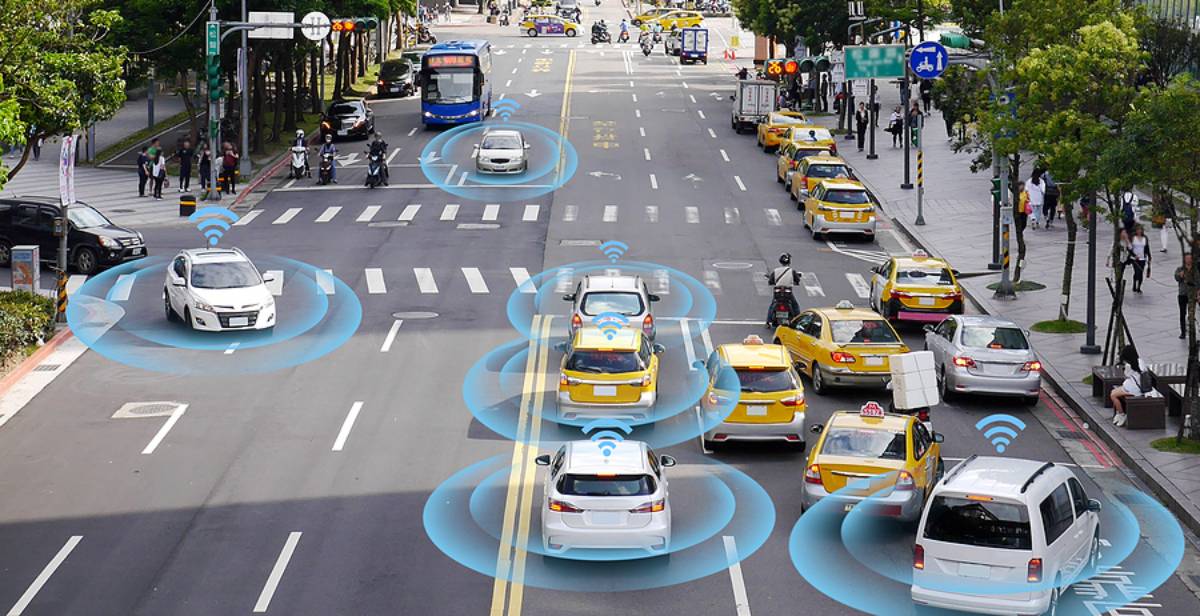
How V2X Technology Improves Road Safety
The automotive industry is changing fast due to new technology. Innovations are shaping how cars are made and used. Vehicle-to-Everything (V2X) communication is a key development. It promises to change road safety for the better. V2X communication is a system that lets vehicles talk to each other and to their surroundings. This includes:
- Vehicle-to-vehicle (V2V)
- Vehicle-to-infrastructure (V2I)
- Vehicle-to-pedestrian (V2P)
- Vehicle-to-network (V2N)
- Vehicle-to-grid (V2G)
The importance of V2X technology cannot be overstated, particularly in the context of road safety. Global road traffic deaths exceed 1.3 million each year, according to the World Health Organization (WHO). So, it’s vital to enhance vehicle communication and reaction times. V2X communication helps vehicles share important data instantly. This can prevent collisions, improve traffic flow, and create safer roads. This blog examines the significant effects of V2X technology on road safety. It discusses its advantages, practical applications, expert advice, and obstacles to broader use.
Key Benefits / Why It Matters
Enhancing Situational Awareness
V2X communication boosts situational awareness. It lets vehicles send and receive information that the driver can’t see. For example, a car approaching a blind curve can be notified of a slow-moving vehicle or a stationary hazard ahead. If an emergency vehicle is coming from behind, V2X systems can alert drivers to yield. This happens even before they can hear the sirens.
Early warnings help drivers react better to dangers, especially in tricky places like city intersections, tunnels, or spots with limited visibility. V2X’s ability to “see” and “hear” beyond what human drivers can is a key safety advantage.
Reducing Collision Risks
Reducing collisions is perhaps the most significant benefit of V2X technology. V2V communication prevents accidents by sharing data on speed, location, direction, and acceleration. This constant exchange helps drivers stay aware and predict potential dangers. For instance, if a vehicle abruptly brakes, following cars can be instantly notified, even before the brake lights are visible. This is particularly useful in low-visibility conditions such as fog, heavy rain, or nighttime driving.
V2I communication helps vehicles understand traffic light status, roadwork alerts, and speed limit changes. These insights help prevent both minor and severe accidents. The U.S. Department of Transportation found that V2X systems might reduce non-impaired crashes in light vehicles by up to 80%.
Improving Traffic Flow and Reducing Congestion
Efficient traffic management is essential not just for convenience but also for safety. Congested roads often lead to increased frustration and risky manoeuvres by drivers. V2X communication eases traffic jams. It syncs vehicle movements with traffic signals. It also gives the best route suggestions based on real-time conditions.
For example, if multiple cars near a red light, the V2X system can tell drivers to slow down gradually. This helps keep traffic flowing smoothly and saves fuel. In turn, this lowers the likelihood of rear-end collisions and the environmental impact of stop-and-go traffic.
Enhancing Pedestrian Safety
Pedestrians are among the most vulnerable road users. V2P (Vehicle-to-Pedestrian) communication is crucial for keeping people safe. This is especially true in crowded areas like cities, schools, and hospitals. V2X-enabled vehicles can spot pedestrians with smartphones or wearables linked to the V2X system. If a pedestrian is about to cross the road—especially outside crosswalks—the vehicle can alert the driver. It may then slow down or issue a warning.
This helps cut down on pedestrian accidents, especially at night or in bad weather when visibility is low. It also supports a transport system that includes vulnerable groups. This means it helps children, the elderly, and people with disabilities.
Facilitating Faster Emergency Response
If there’s a collision, V2X technology can quickly alert emergency services. It sends important details like GPS location, impact severity, and the number of occupants. This data speeds up emergency services. It allows for faster medical help and can save lives.
V2X can also help clear the way for ambulances and fire trucks. It does this by alerting nearby vehicles to yield and coordinate their movements. This smart coordination boosts efficiency and safety during emergency operations on busy roads.
Real-World Applications of V2X in Action

Many countries see the benefits of V2X technology. They are using pilot projects and real-world examples. In the United Kingdom, the Midlands Future Mobility initiative is testing V2X technologies. They are exploring how connected and autonomous vehicles work with real roads. This trial covers hundreds of miles.
In the U.S., the Tampa Hillsborough Expressway Authority started a V2X program. Thousands of cars now talk to roadside units. This helps cut down accidents and improves traffic flow.
In Japan, V2X technologies help at intersections with low visibility. They alert drivers to crossing traffic and pedestrians. These real-world cases show how V2X can change things. It helps prevent accidents and improve transport systems.
Additional Expert Tips & Common Mistakes to Avoid
Best Practices for Implementing V2X Technology
- Standardisation and Interoperability: For V2X to reach its full potential, all stakeholders need to agree on communication standards. ETSI and 5GAA are leading the way in this effort. Ensuring that all vehicles, regardless of make or model, can communicate seamlessly is critical.
- Invest in Robust Cybersecurity: V2X systems, being data-driven, are susceptible to cyberattacks. Manufacturers and infrastructure operators should focus on three key areas: end-to-end encryption, authentication protocols, and intrusion detection systems. Regular system audits and updates should be mandatory.
- Pilot Testing Before Deployment: Start V2X deployments in controlled settings like testbeds or smart city zones. Feedback from these environments can help fine-tune systems before wider implementation.
- Public Education and Awareness Campaigns: The public needs to understand V2X functions in order to use it effectively. Government campaigns can educate citizens on the benefits and limitations of V2X to foster trust and adoption.
Common Mistakes and Misconceptions
- Assuming V2X Is Only for Autonomous Vehicles: V2X is often wrongly seen as a technology reserved for self-driving cars. In truth, it enhances safety for all vehicles, including those driven manually.
- Neglecting Legacy Vehicles: V2X systems are most effective when a high percentage of vehicles are connected. Neglecting retrofitting options or ignoring legacy vehicles can slow down benefits.
- Ignoring Data Privacy Concerns: Not addressing worries about personal data sharing can cause a public backlash. Transparent policies and user controls must be implemented from the outset.
Advanced Insights / Expert Recommendations
Integrating V2X with Other Safety Technologies
V2X is not a standalone solution; it works best when integrated with other ADAS features such as:
- Collision Avoidance Systems: Using V2X with radar and cameras helps create quicker, layered responses.
- Smart Traffic Management Platforms: Cities using IoT traffic systems can adjust signals and manage congestion with V2X data.
- Platooning: V2X allows for ‘platooning’: This means a group of vehicles can drive closely together at high speeds. They move in sync for better efficiency. This is particularly effective for freight transport and reduces fuel usage.

V2X and 5G: A Synergistic Relationship
The rollout of 5G is expected to turbocharge the adoption of V2X systems. 5G is different from 4G and DSRC (Dedicated Short-Range Communication). It provides ultra-low latency and higher bandwidth. This means it can transmit data in real-time, which is crucial for safety applications.
5G-based Cellular-V2X (C-V2X) allows reliable long-distance communication. This makes it great for rural areas or fast motorways, where dangers can arise quickly. It also supports broader integration with smart city infrastructure.
Global Collaboration and Regulation
For V2X to thrive, international regulatory frameworks must be harmonised. The United Nations Economic Commission for Europe (UNECE) and others are working to standardise vehicle communication worldwide. Collaborative frameworks help vehicles operate safely across borders. This boosts international road safety.
Conclusion: Driving Towards a Safer, Smarter Future
In conclusion, V2X technology is a big step forward for road safety and smart transport systems. V2X can improve our roads in many ways. It boosts situational awareness, cuts down collisions, and streamlines traffic flow. Plus, it enhances emergency response. More vehicles are connecting, and cities are adding smart infrastructure. This makes safer, efficient, and eco-friendly transport a reality.
However, unlocking the full potential of V2X requires a coordinated effort. Governments, automakers, telecom providers, and consumers need to work together. They should create systems that can work with each other, protect data privacy, and establish the needed infrastructure. Public education is also vital to help drivers understand and trust these systems.
Ultimately, V2X technology is not just about the vehicles—it’s about creating a holistic, cooperative road ecosystem. As we stand on the brink of a new era in transport, now is the time to embrace innovation. Whether you’re a policymaker, engineer, or everyday driver, your engagement is key to building safer roads for generations to come.
Are you ready to be part of the connected future? Share your thoughts on how V2X technology could transform your driving experience—and let’s drive change together.